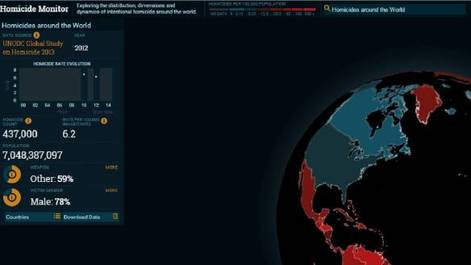.
Video of the event is available at https://www.youtube.com/watch?v=pDluRxQxXFA&t=351s
6:12 Welcome and event framing - León Castellanos-Jankiewicz, Senior Researcher, Asser Institute for International and European Law, The Hague
- “Appeals Court Revives Mexico’s Lawsuit Against Gunmakers,” New York Times, January 22, 2024. See also Transnational Litigation Blog, January 24, 2024, and Just Security, April 4, 2023.
- "El Blindaje de las Armerías Europeas," El País, July 31, 2023. In English: "The armor of the European arms industry."
11:35 Importance for Mexico – Fadia Ibrahim, Director of International Litigation, Ministry of Foreign Affairs, Mexico
- Why Mexico is taking legal action… High profile events in El Paso and in Mexico, and daily gun violence. Cases in Massachusetts and Arizona. Also Inter American Commission on Human Rights (request, update).
- Why suing in the United States, and actions of gun industry.
23:57 Impact of U.S. Gun Policy on Mexico - Carlos Pérez Ricart, Professor of International Relations, Center for Research and Teaching in Economics (CIDE, Mexico)
- The relaxation of restraint on guns in the United States, particularly via termination of assault weapons ban in 2004 and enaction of Protection of Lawful Commerce in Arms Act (PLCAA) in 2005, had a disastrous effect in Mexico.
- Lawsuit needs to be part of a broader strategy in Mexico (see next intervention).
31:24 Transition to discussion about recent decisions and implications on future legal action
34:00 Understanding the cases, their status, and next steps - Jonathan Lowy, Founder and President, Global Action on Gun Violence and co-counsel for Mexico on cases discussed in event
- Global Action on Gun Violence Work in Mexico - documents and other resources, including amicus briefs, on the two cases
- Fundamental claim is negligence by manufacturers and distributors, and explanation why special protection under PLCAA should not apply here (under predicate exception). Defendants seeking review by Supreme Court, but believes Supreme Court will not choose to take it up. Some additional issues to take up at district court, after which discovery could take place.
43:28 Possibilities in International and U.S. Law - Leila Nadya Sadat, James Carr Professor of International Criminal Law, Washington University and Fellow, Schell Center for Human Rights, Yale Law School
- Initially took steps at the Inter American Commission on Human Rights.
- Recognizes that connection between migration and flow of weapons is not made often enough.
- Cases are strong on facts and the harm. Latest decision is conservative and may not draw attention of Supreme Court.
- Supreme Court and other actions on guns, including Rahimi case and others.
54:30 International Implications including in Europe, León Castellanos-Jankiewicz
- European companies manufacturing on U.S. soil to skirt European laws, for example.
Reaction Round
56:35 Fadia Ibrahim
- Importance the Mexico case proves exception to perceived PLCAA immunity and expects positive outcome.
57:47 Carlos Pérez Ricart
- Mexico needs data, to build a central firearms authority (such as ATF in the U.S.), focus on most vulnerable groups (particularly those already harmed), make a central topic in relationship with U.S. including calling for background checks in neighbor states and border infrastructure, and create binational effort to deal with technology advances (3D printers, etc).
- Violence in Mexico is beyond the United States but within control of the United States. Mexico itself must have a better policies too.
1:03:00 Jonathan Lowy
- Crisis on both sides of the border, would not happen without this gun pipeline.
1:04:32 Leila Nadya Sadat
- Has been a huge shift in political dialogue… no longer solely about Second Amendment but rather that is about the guns (as a vector).
1:07:03 Beginning of Q&A
1:07:33 What is your take on the attempt of some US politicians to consider drug traffickers as terrorists? What are the impacts of this attempt on the lawsuits?
- 1:08:24 Carlos Pérez Ricart replies that always hear this around time of election, and it’s a political issue, and less about a real response. Not believe will impact the cases.
- 1:09:44 Fadia Ibrahim asks would that mean that the gun industry is helping terrorist groups?
1:10:32 Is the case a game changer? What makes the Mexico case different?
- 1:10:51 Jonathan Lowy replies is important because federal appeals court is upholding claims against gun manufacturers as not protected under PLCAA. Also new that a country is bringing suit. Scope of the problem is massive and if addressed would have huge impact.
- 1:14:04 Leila Nadya Sadat says the Mexico case is beautifully simplistic and difficult to replicate in U.S. courts. But, international courts do communicate with each other. Notices Netherlands case on F-35, and there are international treaties involved that would be good to get the U.S. to join (such as the Arms Trade Treaty). [Note: see January event as well]
1:16:00 Possibility of other countries filing lawsuit
- 1:16:12 Jonathan Lowy replies that if Mexico cases continues to succeed it could greatly reduce the flow of weapons in the region without other countries bringing suit because it could change practices and accountability of gun industry.
This event was co-organized by the Forum on the Arms Trade and the Asser Institute for International and European Law. The Forum and the Institute provide a platform for expert views but do not themselves take positions.





 RSS Feed
RSS Feed